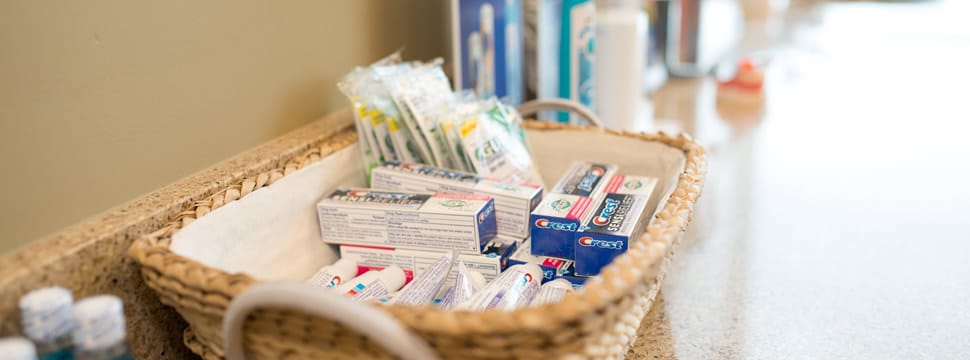Boise Dentist Blog
The professional blog of Doctors Dan Bruce, Steve Bruce, Rosa Pothier and Rob Ririe
Single tooth anterior implant using a 3d CT scan

This week I was able to complete a long treatment process that started with a cracked front tooth. Jeff originally had a root canal on his front tooth 25 years ago after trauma to the tooth. He then had a crown which matched fairly well, but not perfectly. Also, notice that the crown is wider than the adjacent central incisor and there are gaps near the gumline. Finally, he had some recession around the front of the gumline. Last year, the tooth started to hurt to biting and we noted a periodontal defect on the front of the tooth. After consultation with our endodontist, it was determined that the tooth had a vertical root fracture and was not savable.
The only choice was to extract the tooth and place a bone graft in the socket and where the portion of bone was due to the fracture of the tooth. In the meantime, we bonded the original crown with a metal wire we imbedded into the crown. This way the patient did not have to wear a retainer and the crown was used to adapt the soft tissue to the ideal contours. When then had Jeff get a CT scan using the Galileos 3D scanner. This scanner uses minimal radiation and allowed us to create a guide for placing the dental implant exactly where we wanted. The implant was digitally placed in the best bone, with the best emergence profile. A guide was made that fit to the patient's teeth and to guide the surgical drill to the precise depth and position we wanted.
After placing the implant, a temporary abutment was placed with a crown to contour the gingiva. We also placed small bonded composite fillings in the adjacent teeth to make them proportionally the correct shape. We waited 5 months while the implant integrated to the bone. During this time the temporary was completely out of Jeff's bite and we warned him not to eat anything with his front teeth. Notice how the temporary is shorter than the original to keep it out of harm's way.
Finally, we took an impression and had Jeff go to our lab technician for a customized shade match. We used a white zirconia abutment to attach the crown to the abutment. Zirconia is strong and will not show through the tissue like a titanium abutment will. It is also very biocompatible so we did not get any inflammation near the gingiva. Below are the 2 pictures of the final crown. The gums have adapted very well. The color looks a little bit whiter in the one of the photos, but I believe it is because of the way the light bounces of the porcelain when we take a picture. The smile photo is very indicative of the true color. Jeff is very happy with the result and given the situation, I think it turned out fantastic! By the way, those are Jeff's fingers in the photos--We would obviously be wearing gloves.
-Dr. Dan Bruce
